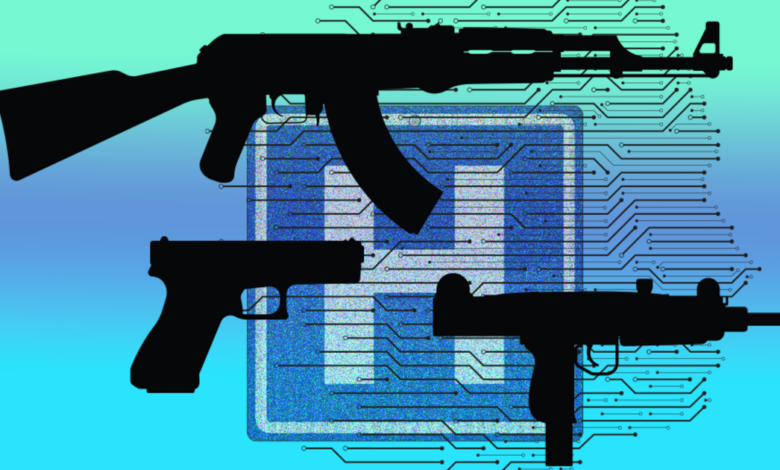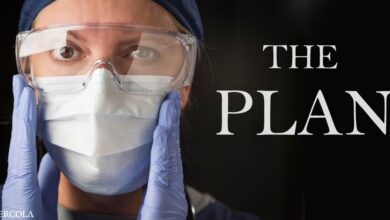Violence in healthcare surges but security fixes remain complex

Worsening violence in healthcare settings presents providers with a vexing dilemma: How to maintain safety and security for staff and patients without creating unwelcoming, closed environments in what are meant to be places of healing.
Abuses committed against personnel in hospitals and other facilities aren’t a new problem, but statistics show a worrying upward trend. And America’s gun violence epidemic isn’t sparing the nation’s healthcare providers, as several recent high-profile incidents demonstrated.
Some healthcare providers have responded to these parallel but different challenges by ramping up security, including bringing aboard more guards and further incorporating law enforcement officers into their operations. But these organizations lack the necessary information to understand the causes of rising violence in healthcare settings and so are developing internal reporting systems to inform more comprehensive solutions.
Healthcare workers are subject to a wide range of violence, stemming from so-called clinically induced violence committed by patients under the influence of anesthesia or other drugs and interventions, the stress that permeates spaces that house the unwell and employ the overworked, patients and others with behavioral health problems, and simple crime.
The violence is escalating, according to the International Association for Healthcare Security and Safety Foundation, a nonprofit organization that researches hospital security and advocates for workplace safety protocols. The foundation published a survey with responses from more than 200 hospitals last year that reported a 150% increase in violent crime between 2016 and 2021.
While shootings make up a small percentage of violent occurrences in healthcare settings, their growing prevalence reflects a broader culture of abuse that healthcare workers endure. In 2020, 56% of violence-related workplace injuries occurred in healthcare facilities, according to the Bureau of Labor Statistics. Verbal abuse is the most common form, followed by assault, theft and vandalism. Nurses, who spend the most time with patients, and employees of color, are particularly prone to attacks.
Violence has become a top issue for healthcare executives managing the fallout amid broader labor shortages.
In general, hospitals are intensifying security protocols amid a wave of violence that has become more pronounced since the COVID-19 pandemic began, said Chris Clarke, a nurse and senior vice president for clinical and professional practices for the Tennessee Hospital Association.
That form of response directly addresses incidents such as the murder of orthopedic surgeon Dr. Benjamin Mauck in Collierville, Tennessee, last month. A gunman allegedly opened fire inside the Campbell Clinic, fatally shooting the physician in an examination room.
Campbell Clinic and other nearby healthcare facilities, including Methodist Le Bonheur Healthcare in Memphis, swiftly announced plans to toughen security. Methodist Le Bonheur Healthcare, for example, decided to limit access to its locations, augment its security infrastructure and ramp up workplace violence training for employees.
Those actions may be necessary, but increased reliance on armed security officers and police may have unintended consequences for hospital culture and potentially escalate tensions, said Marilyn Hollier, a hospital security specialist at Security Risk Management Consultants.
Hollier said her clients are increasingly considering “hybrid” security models that incorporate police presence at entry points. Investments are also being made in advanced weapons-screening devices and metal detectors.
Although these measures do not contribute to the healing atmosphere at hospitals, the present circumstances make them essential, she said. When utilizing police and armed guards, Hollier advises limiting their roles within hospitals to maintain weapon-free zones, not to foment unease and not to make security personnel unavailable to respond to lower-grade, everyday incidents.
“In today’s world, there have been so many random incidents. Guns are so prevalent, and there are so many issues driving bad behavior that I think there is a need,” Hollier said. “I just worry that hospitals will shift the money—because there’s only so much—to the doors and the metal detector and not have officers to respond and assist with the patient management calls on the floors.”
Hospitals need to gauge the influence of police presence on patient wellbeing, particularly among populations that have been historically marginalized or have faced a history of police violence, said Dr. Judy Arnetz, professor and associate chair for research in the Department of Family Medicine at Michigan State University.
Integrating new forms of patient management at the bedside could help alleviate overburdened clinicians, Hollier said. The responsibility for confronting violence should fall to professionals skilled in de-escalation and crisis management, she said. Internal hospital security teams should prioritize addressing the bulk of violent episodes that aren’t gun-related. Training in crisis management, integration of security within patient care teams and tools such as body cameras could bolster hospital security, she said.
Controlling access, monitoring visitors and detecting threats early are paramount, Hollier said. Hospital checkpoints should be designed to identify previous violent offenders and strategize how to handle them. The influx of psychiatric patients in emergency departments poses another challenge, she said. These units are unequipped to cater to behavioral health needs yet are experiencing prolonged patient stays, which amplifies risk.
Devising and implementing security measures that go beyond filling hospitals and other facilities with more armed personnel depends on gathering better information about the problem and its potential solutions.
Healthcare providers are only beginning to assemble a coherent view of the nature and drivers of rising violence, given a historical lack of reporting and data collection, Arnetz said.
Underscoring the gaps in the available data, the International Association for Healthcare Security and Safety Foundation cautions that its survey data on trends in healthcare workplace violence are imperfect. The results may be skewed because there is no standardized format to report this type of information, the organization concedes.
Efforts are underway to design a system to monitor instances such as shootings, assaults, theft, clinically induced violent episodes, behavioral health crises, racism and bullying.
Last year, the Joint Commission introduced mandatory standards on workplace violence reporting and management to its accreditation programs. This provides a structured approach for providers, Arnetz said. Rep. Joe Courtney (D-Conn.) authored the Safety from Violence for Healthcare Employees Act of 2023, which would order the Occupational Health and Safety Administration to create new protections. But the House has taken no action to advance the measure, which the American Hospital Association endorsed, and it has no Senate companion.
Researchers suggest that the data hospitals collect will help executives devise comprehensive violence prevention and security strategies. Hollier said that there are warning signs that could help prevent acts from happening, particularly with gun violence. Hospitals should use such insights to create interdisciplinary teams that work to avert all forms of violence.
In the long term, fostering a safety culture is imperative to reducing workplace violence in all forms, Arnetz said. Well-structured violence-prevention strategies lead to fewer physical disputes and internal conflicts, she said. Nevertheless, given the high-stress nature of healthcare, cultivating a culture that prioritizes civility and eases tension remains crucial, she said.




